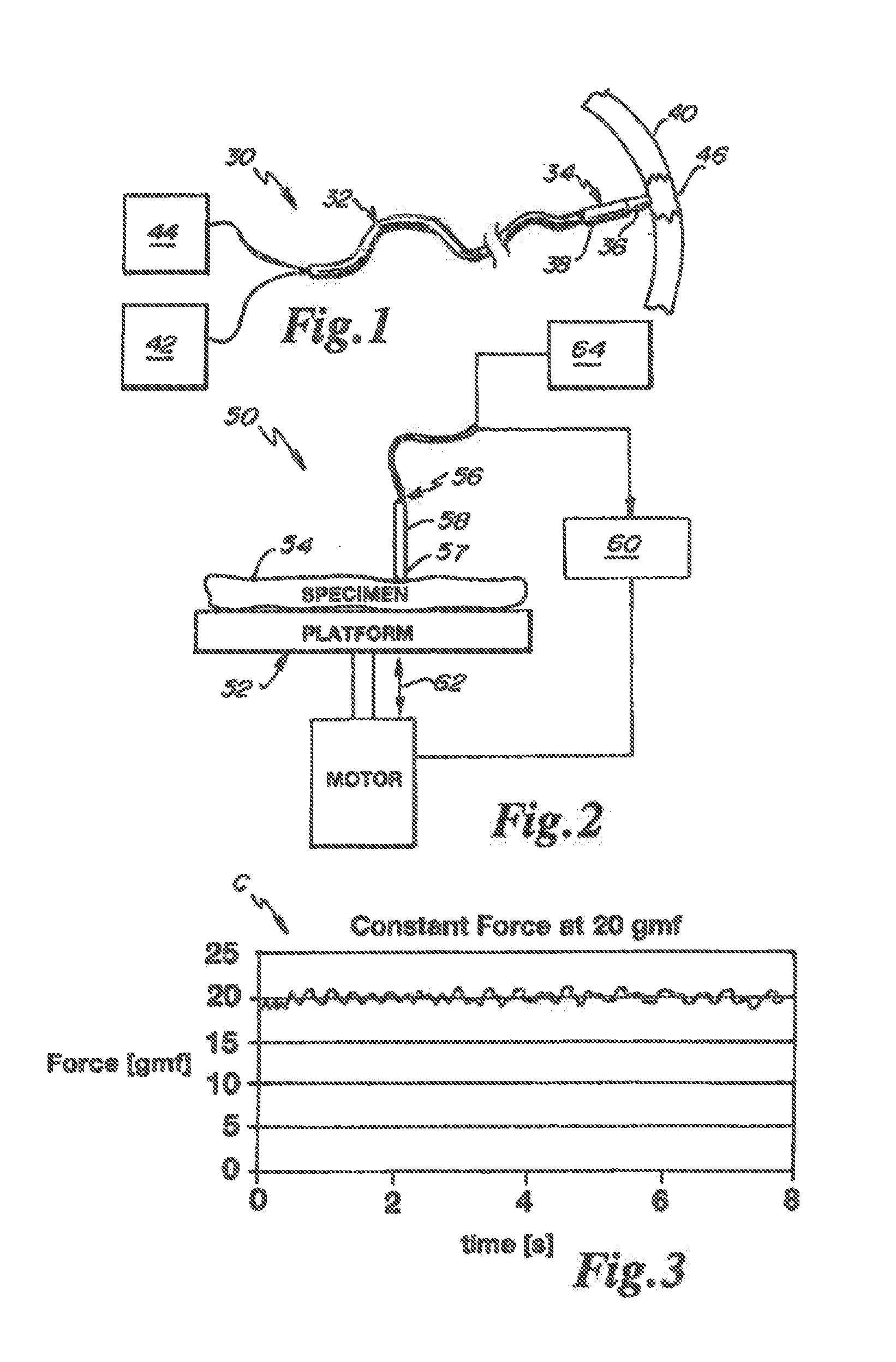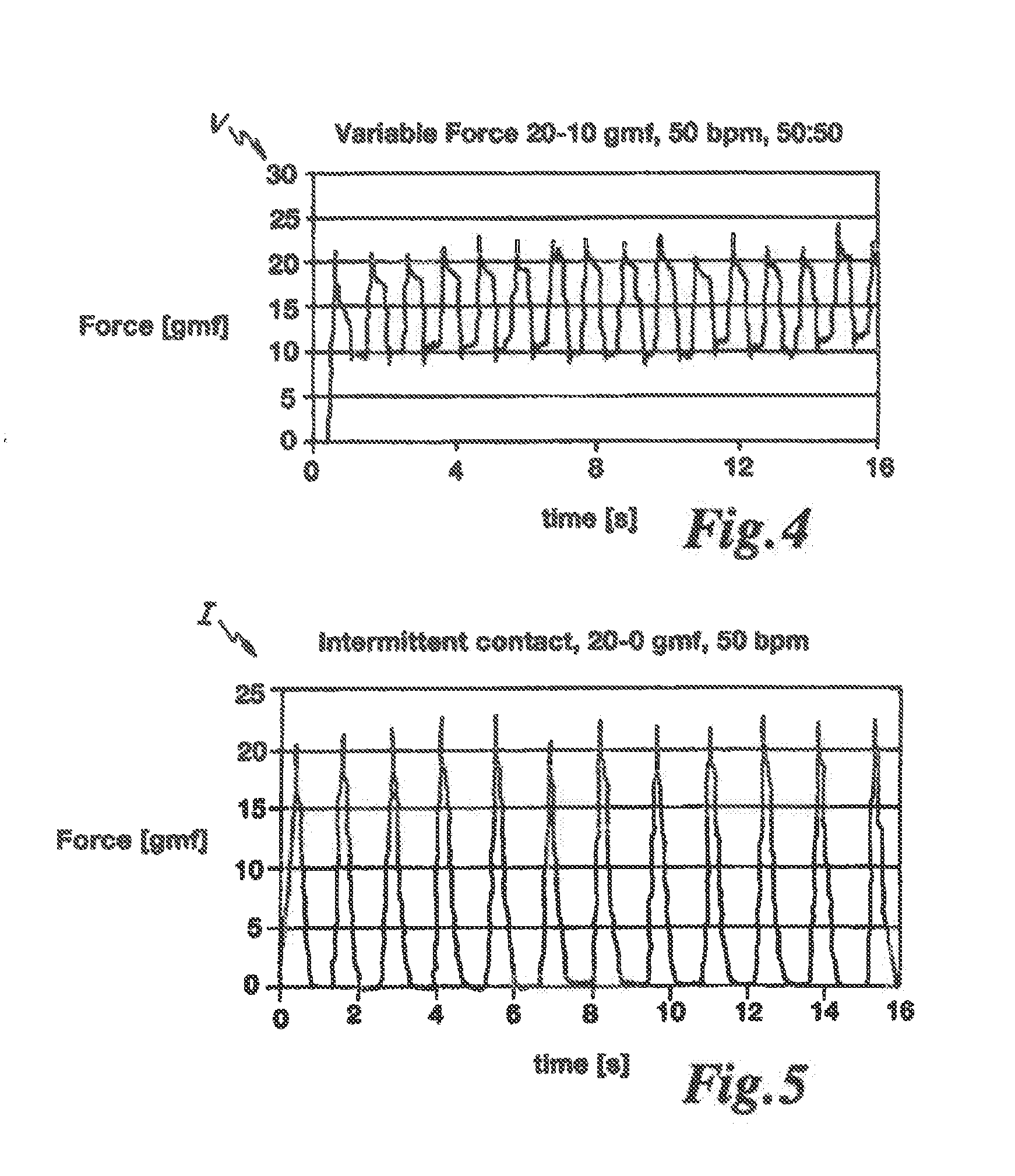Method for predicting the probability of steam pop in RF ablation therapy
a technology of ablation therapy and probability prediction, which is applied in the direction of catheters, applications, diagnostic recording/measuring, etc., can solve the problems of increased risk of stroke in individuals with atrial fibrillation, increased risk of atria recirculation and clots, and reduced steam pop probability, so as to reduce the incidence of steam pop and reduce the risk of steam popping , the effect of reliable indication
- Summary
- Abstract
- Description
- Claims
- Application Information
AI Technical Summary
Benefits of technology
Problems solved by technology
Method used
Image
Examples
Embodiment Construction
[0069]Referring to FIG. 1, a contact ablation system 30 is depicted in an embodiment of the invention. The contact ablation system 30 includes a catheter 32 having a distal portion 34 comprising an ablation head 36 operatively coupled with a force sensor 38, the ablation head 36 arranged for contact with a target tissue 40. The catheter 32 is operatively coupled with a power source 42 that provides and measures the delivered energy to the ablation head 36. A measurement device 44 is also depicted, capable of sourcing the force sensor 38 and measuring an output signal from the force sensor 38.
[0070]In operation, the ablation head 36 is brought into contact with the target tissue 40 and energized to create a lesion 46 on and within the target tissue 40. The force sensor 38 is configured to generate an output from which a magnitude of the contact force can be inferred. Generally, the contact force is time-variant, particularly when the target tissue 40 is subject to motion (e.g., the w...
PUM
 Login to View More
Login to View More Abstract
Description
Claims
Application Information
 Login to View More
Login to View More - R&D
- Intellectual Property
- Life Sciences
- Materials
- Tech Scout
- Unparalleled Data Quality
- Higher Quality Content
- 60% Fewer Hallucinations
Browse by: Latest US Patents, China's latest patents, Technical Efficacy Thesaurus, Application Domain, Technology Topic, Popular Technical Reports.
© 2025 PatSnap. All rights reserved.Legal|Privacy policy|Modern Slavery Act Transparency Statement|Sitemap|About US| Contact US: help@patsnap.com



